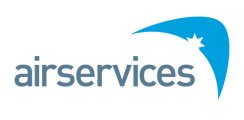World leading improvements in aircraft tracking for Australia

Australia has become one of the first countries in the world to comply with an international requirement to more closely track all suitably equipped flights in its oceanic airspace following the expansion of a trial that began in late January.
Airservices air traffic controllers are now able to monitor international aircraft flying in Australian airspace through updates every 14 minutes using satellite-based positioning technology called Automatic Dependent Surveillance – Contract (ADS-C).
The trial follows an initial proof of concept phase which saw Airservices work with Qantas, Virgin Australia and global satellite provider Inmarsat to track Qantas and Virgin aircraft flying in oceanic airspace to the east of Australia once every 10 to 15 minutes.
The trial was expanded to include all aircraft in late April and was further expanded to oceanic airspace west of Australia on 28 May. The reporting interval time was also adjusted to 14 minutes in line with a recommendation from the International Civil Aviation Organisation (ICAO). The reporting interval can be further increased in case of an emergency or if the aircraft deviates from its assigned route.
Airservices Acting CEO Mark Rodwell said “Aircraft flying over continental Australia are already tracked in real-time by radars or continuous position reporting to Airservices ground stations. We are pleased to extend our ability to more closely track aircraft outside of conventional radar coverage to enhance safety and public confidence in aviation.”
The trial is also being further expanded, with Airservices working with air navigation service providers in the United States and New Zealand, as well as South Africa, Indonesia and Malaysia.
Airservices Executive General Manager Air Traffic Control, Greg Hood, acknowledged and thanked Inmarsat, Qantas and Virgin Australia for their support with the proof of concept and ongoing cooperation in the trial.
“This ensures that we have more accurate and timely information about flights in oceanic airspace where we are unable to track aircraft using traditional radar that relies on ground-based sites.
“We will continue to work with the international aviation community on long-term solutions to aircraft tracking in oceanic airspace, but in the meantime this trial allows our controllers to observe and react to any unusual flight behaviors and notify search and rescue agencies earlier if necessary,” Mr Hood said.
“I would also like to thank our staff in taking us a further step towards ongoing international efforts to develop global standards and solutions for future aircraft tracking solutions.”



.jpg)
.png)




Comments
There are no comments yet for this item
Join the discussion